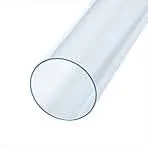Nov . 18, 2024 13:04 Back to list
Understanding PPR Hot Water Pipe Applications and Benefits for Plumbing Systems
Understanding PPR Hot Water Pipes An Overview
PPR (Polypropylene Random Copolymer) pipes have gained significant popularity in the plumbing and construction industries, particularly for hot water applications. This material is known for its excellent performance, durability, and cost-effectiveness. In this article, we will delve into the key advantages and considerations of using PPR hot water pipes.
Understanding PPR Hot Water Pipes An Overview
Another significant benefit of PPR hot water pipes is their excellent chemical resistance. They are not affected by many acids, bases, and salts, which makes them suitable for various applications beyond residential plumbing. They can be used in industrial settings, including chemical processing, where exposure to corrosive substances is common. This chemical stability not only extends the lifespan of the pipes but also enhances their reliability in various operational environments.
ppr hot water pipe

Moreover, PPR pipes are lightweight and easy to handle, which simplifies the installation process. Unlike metal pipes, which require heavy equipment and complex tools, PPR pipes can be cut and connected with simple welding techniques. This ease of installation translates to reduced labor costs and shorter project timelines. Additionally, the smooth interior surface of PPR pipes minimizes friction, enhancing water flow and reducing pressure loss.
However, it is essential to consider some limitations when opting for PPR hot water pipes. While they are resilient, extreme temperatures above the specified limits can compromise their structural integrity. Therefore, proper insulation is recommended for installations in environments subject to fluctuating temperatures. Furthermore, PPR is not suitable for applications involving significant external pressure or mechanical stress, as it may not perform as well as metal options in such conditions.
In conclusion, PPR hot water pipes present a viable solution for modern plumbing needs. Their high-temperature resistance, chemical stability, and ease of installation make them a compelling choice for both residential and industrial applications. By understanding their advantages and limitations, property owners and contractors can make informed decisions about the appropriate piping systems for their specific requirements, ensuring long-lasting and efficient plumbing infrastructures.
-
High-Quality PPR Pipes and Fittings Durable ERA PPR & PVC PPR Solutions
NewsJul.08,2025
-
Black HDPE Cutting Board - Durable, Non-Porous & Food Safe HDPE Plastic Cutting Board
NewsJul.08,2025
-
High-Quality CPVC Panel Durable HDPE & PVC Panels Supplier
NewsJul.08,2025
-
Double PE Welding Rod Supplier - High Strength, Durable & Versatile Welding Solutions
NewsJul.07,2025
-
High-Quality PVC-O Pipe Supplier Durable 75mm PVC Pipe & Connections Leading PVC Pipe Company
NewsJul.07,2025
-
HDPE Drainage Pipe Supplier – Durable & Corrosion-Resistant Solutions
NewsJul.06,2025

